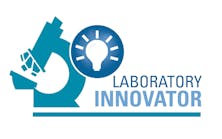B
iomarkers are the linchpin to personalized medicine, yet most of the hundreds of identified protein and nucleic acid biomarkers sit in limbo — unvalidated, unapproved, and unused. Heralded as the solution for improving patient care, reducing healthcare costs, and increasing pharmaceutical R&D productivity, personalized medicine will rely on biomarkers to improve diagnosis, prognosis, and drug safety and efficacy. Few seem interested, however, in taking on the large, expensive clinical trials needed to definitively prove that a particular biomarker will improve outcomes. Healthcare reform and public/private initiatives now underway may help to advance the plight of biomarkers to widespread adoption. Nothing less than the full support and intervention of governmental agencies, however, will be sufficient to push biomarkers across the finish line of integration into the healthcare mainstream.
HER2/neu is often touted as the shining star of biomarker potential — a predictive biomarker routinely used as a companion diagnostic to indicate which breast cancer patients will benefit from the drug Herceptin. What is the difference between utilized, validated biomarkers and those that gather dust (e.g., CYP 450 allele status for anticoagulants)? Why are novel biomarkers, so excitedly reported upon their discovery, languishing on the back shelf of unrealized promise?
The challenges to biomarker adoption fall primarily into three categories — regulatory validation, clinical acceptance, and reimbursement. In sum, these obstacles present a seemingly insurmountable hurdle to mainstream use but, considered separately, pose reasonably solvable challenges.
Consider the model for new laboratory test commercialization. For a diagnostic company with intellectual property rights to a biomarker, the market opportunity will be on the order of $100 million. The pivotal trial required to prove the validity for such a test, comprising thousands of patients, is likely to cost several million dollars over one to five years. With patent protection lasting roughly five to 10 years at launch, the return on investment warrants the effort.
Safety and efficacy biomarkers as companion diagnostics often represent a much smaller market, and, typically, the diagnostics companies do not own the intellectual property (IP) needed to provide a financial incentive to develop and commercialize them. On the pharma side, revenue from a newly approved drug can reach hundreds of millions of dollars. Yet, unless the Food and Drug Administration (FDA) mandates that genotyping be required as part of the labeling of the new drug, pharmaceutical companies will justifiably lack the motivation and incentive to fund distinct biomarker validation studies in tandem with the drug trial. Ultimately, the companion diagnostic used to prove safety or efficacy is left behind at commercialization. To incentivize diagnostics companies to partner with pharma to validate and commercialize such tests, the FDA should grant a period of exclusivity to the diagnostic company submitting the test at approval to enable a return on investment.
The lackluster uptake of genomics-based prescribing by physicians represents a different facet of the same issue. Physicians are trained to adopt clinical practice upon clear evidence-based utility; but without definitive clinical trials, the requisite data is absent. And because the market is segmented across generic and brand-name drugs, no obvious “owner” exists to unambiguously define the risks associated with various genotypes.
In these cases, the government must spearhead the pivotal trials needed to conclusively validate biomarkers, enabling diagnostics companies to then develop assays for use in the open market. Unless these pivotal trials are funded by government agencies, diagnostics companies will be reluctant to fund and conduct these studies, as they will face prohibitive costs to prove clinical utility for biomarkers for which they do not hold exclusive IP, leaving biomarkers one crucial step away from clinical utility.
To illustrate the scope of the conundrum, estimates are that 20,000 to 100,000 patients experience adverse events annually due to incorrect dosing of warfarin alone, resulting in substantial societal and healthcare costs exceeding $1 billion.
The FDA requires pharmacogenomic labeling for many drugs yet, generally stops short of mandating genetic testing. The Centers for Medicare and Medicaid Services (CMS), which determines the coverage for roughly 70 million Medicare and Medicaid patients covered under its auspices, also sets the tone for private insurance coverage but does not link its policies with FDA clearances or approvals. Without reimbursement, physician and patient uptake for such tests is unlikely to increase substantially.
While widespread biomarker integration has been slow to materialize, various U.S. agencies have begun to embrace personalized medicine; and there is hope that progress will be made soon.
The National Institutes of Health (NIH) announced the new Center for Translational Medicine to bridge the widening gap between discovery and the high-risk early development of candidate drugs, an area which has seen an exodus of pharmaceutical company research. This program is certain to encompass a biomarker element as part of its scope, identifying target patient populations for candidate drugs.
The Biomarker Consortium, organized by the NIH Foundation, is a public-private collaboration with seven projects underway to “rapidly identify, develop, and qualify potential biological markers.”
The American Recovery and Reinvestment Act of 2009 provided $1.1 billion for Comparative Effectiveness Research (CER). Biomarker validation has been identified by CER leaders as a top priority. The Patient Protection and Affordable Care Act of 2010 provides sustained federal funding for CER through 2019.
The act also created the Patient-Centered Outcomes Research Institute, a non-profit corporation designed to set priorities and help channel CER funding. Biomarkers will be a key method for evaluating effectiveness and outcomes.
Ideally, one of the agencies involved in these efforts will be given the responsibility for evaluating biomarkers — determining those that are sufficiently developed to progress to pivotal trial status — and also given the funding to move them forward.
Across the board, there is widespread agreement that personalized medicine is the future of healthcare — that biomarkers will undoubtedly reduce costs, increase compliance, and improve outcomes — and even help to rescue drugs shelved for adverse events in certain patient subpopulations. With large validation studies backed by governmental agencies and positive reimbursement policies from public and private payers, physicians will adopt biomarkers into routine clinical practice and finally realize their potential to impact the mainstream of medicine.
Jeremy Bridge-Cook, PhD, is senior vice president of the Assay Group at Luminex. Bridge-Cook’s PhD is in immunology from the University of Toronto.




